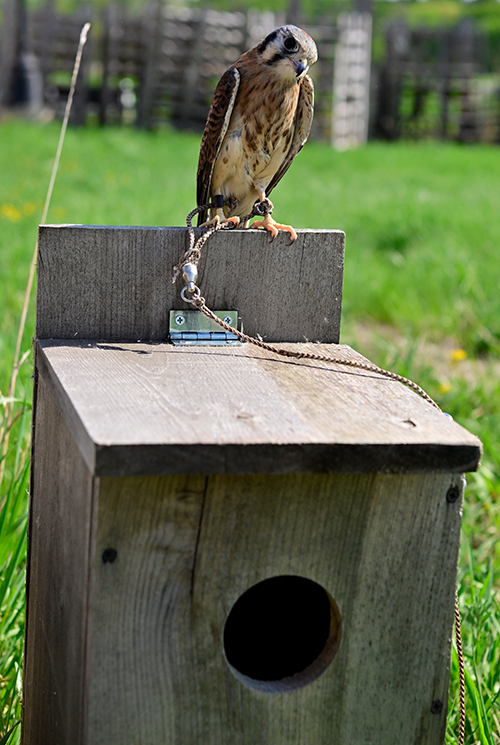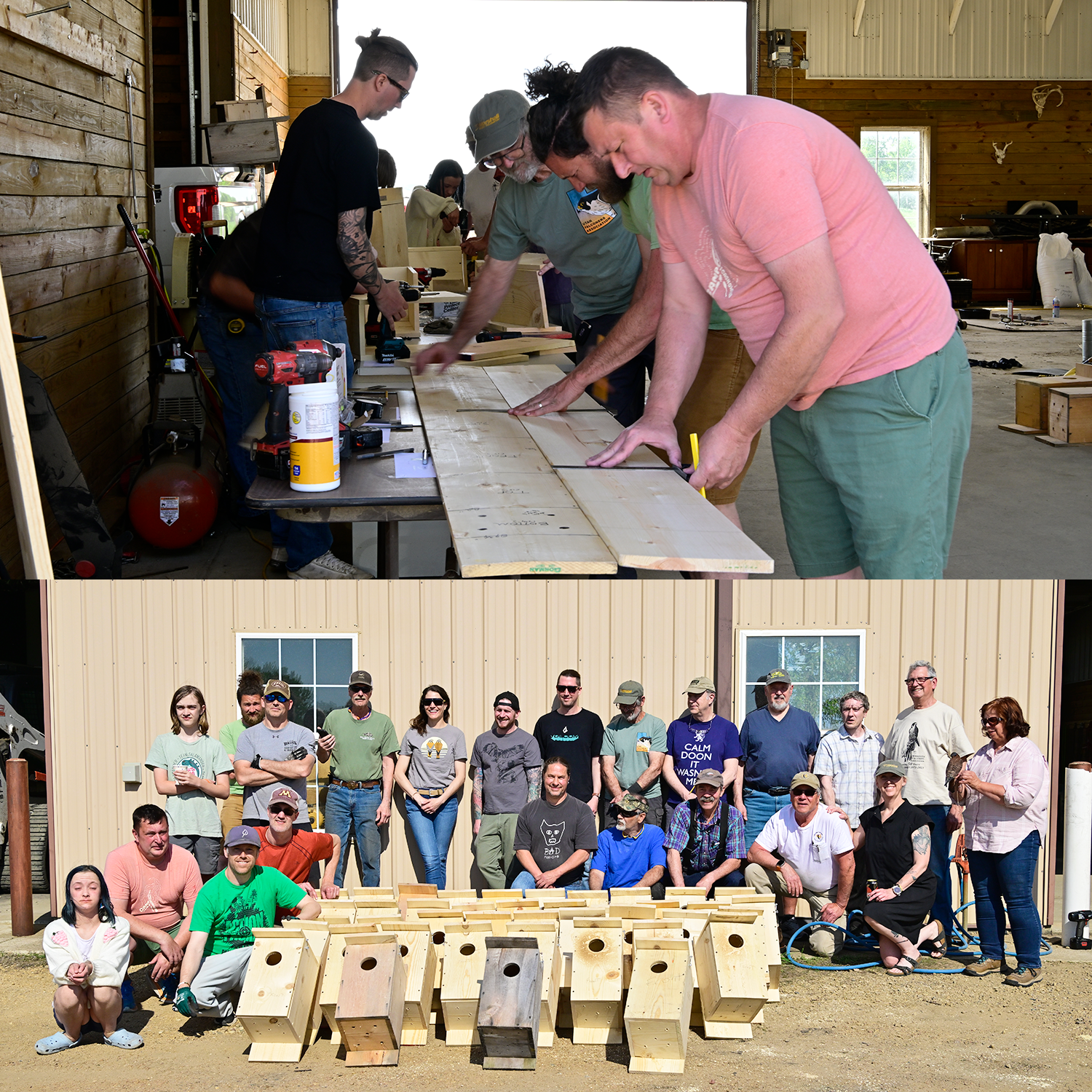5/15/2025 11:00:00 AM
 All eight Minnesota Veterans Homes and four State Veterans Cemeteries will soon be hopeful hosts to the smallest of North America's falcons.
All eight Minnesota Veterans Homes and four State Veterans Cemeteries will soon be hopeful hosts to the smallest of North America's falcons.
This past fall, the Preston Veterans Home Residents enjoyed a presentation from the Mayo Clinic Peregrine Falcon Program about local raptors and falconry. After learning more about the resident birds of prey, the Home was inspired to put up a kestrel nest box on the property. Building off the popularity of the idea the Preston Home, MDVA employee and falconer Grant Hartman thought it would be an opportunity to extend the effort. Hartman is also a member of the Minnesota Falconers Association (MFA) which holds an annual kestrel nest box building event and suggested this year they donate some of the boxes to MDVA facilities across the state, providing important shelter for these small birds of prey. This year the organization built a record 51 nest boxes.
A kestrel is a small falcon known for its distinct hunting behavior of hovering and then swooping down on prey. They are characterized by their small size, long wings, and colorful plumage. Kestrels are one of the most widespread and familiar falcons in North America. They usually live in prairies and eat grasshoppers, dragonflies, small birds and rodents.
Kestrels are cavity nesters, so the kestrel next boxes provide a perfect home. The boxes are roughly two feet tall and are placed 10 to 30 feet above ground in open fields, meadows or hedgerows next to open areas.
Hartman, who hunts with a red-tailed hawk, is pleased to share his passion for falconry with the Veterans Homes’ Residents and visitors to the State Veterans Cemeteries. While American Kestrels are not currently considered endangered, they are experiencing a widespread population decline, attributed mainly to habitat loss and the use of insecticides.
These new nesting boxes should help support the kestrel population in Minnesota while providing a closer encounter with wildlife for the Veterans Homes and Cemeteries.
